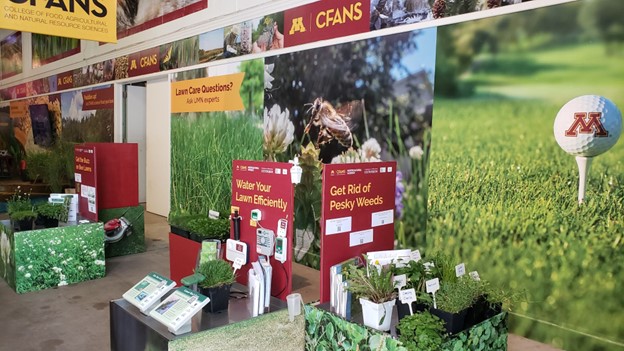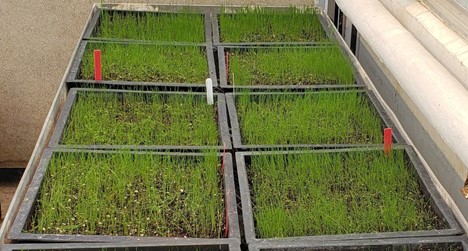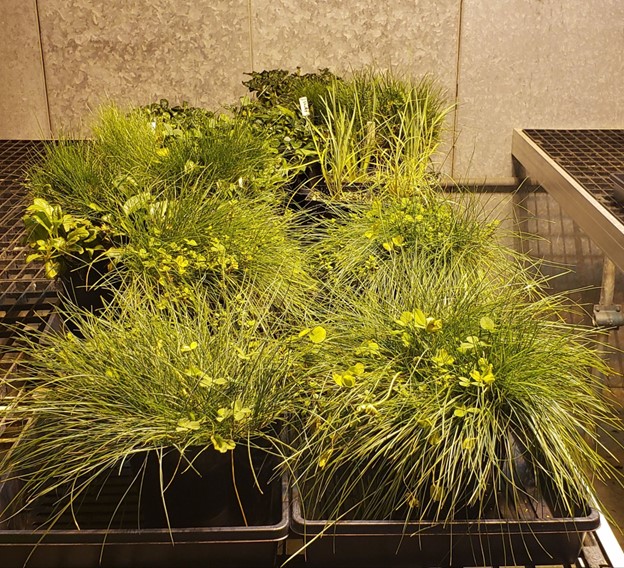By Gary Deters
In 2023, with help from the College of Food, Agricultural and Natural Resource Sciences, we redesigned our Minnesota State Fair exhibit space in the Agriculture Horticulture Building. This redesign required a lot of thought and planning to update the display’s function to better educate fairgoers on lawn care and water use (Figure 1). Although the State Fair is months away, we have already begun planning for our annual exhibit in late August.

I recently planted some pots with grass seed, which will be used at the fair to give people a chance to view and feel several different species of home lawn turfgrasses (Figure 2). Planting them now will give them a chance to be fully mature by late August. Another item that takes planning and timing is the use of a cold treatment, or vernalization, to ensure that the bee lawn plants flower simultaneously with the fair. Once exposed to the long period of cold temperatures, plants will develop the capability of flowering. This allows people to see the flowers blooming and understand what attracts pollinators.

Earlier this year, we placed self-heal plants in a cooler for 8 to 12 weeks to determine how long it would take them to flower after we removed the plants from the cooler. In all cases, it took about 5-6 weeks for the plants to begin to flower after being removed from the cool environment. Based on this information, we placed several plants, which included self-heal, dutch white clover, and creeping thyme in the cooler on May 3rd, planning to remove them during the 1st week of July. We hope this timing will result in the plants flowering perfectly for the last week of August (Figure 3).

Lawn weeds are also a very popular feature at the fair because they are so prevalent in home lawns, and having good examples to help identify them is important. For example, crabgrass under natural conditions in the home lawn are mostly past flowering by the time the fair is going. To have good crabgrass plants for the fair, we need to take extra steps. We know approximately how long it takes crabgrass to flower, so if we plant seeds around July 1st, they should be flowering by the end of August.
Something new this year is a dedicated space on the State Fair grounds where we dormant-seeded a bee lawn, fine fescue, tall fescue, and Kentucky bluegrass last fall. Our small pots in our display provide an idea of what grass species look like, but this outdoor area will give fairgoers a real world visual of a well-maintained exhibit featuring home lawn species. The outdoor turfgrass plots are about 200 feet from our indoor display, so it will be easy to direct interested people to the location.
Based on our past interactions with homeowners, we are also going to add new educational information on popular topics such as dormant seeding, irrigating, and the turfgrass species, tall fescue. The Minnesota State Fair will be here soon enough, so if you plan to visit us with questions or photos of lawn issues, try to get a high quality, up-close image. For lawn weed identification, you can even bring in a part of the plant. For those who plan to visit our exhibit, see you soon!